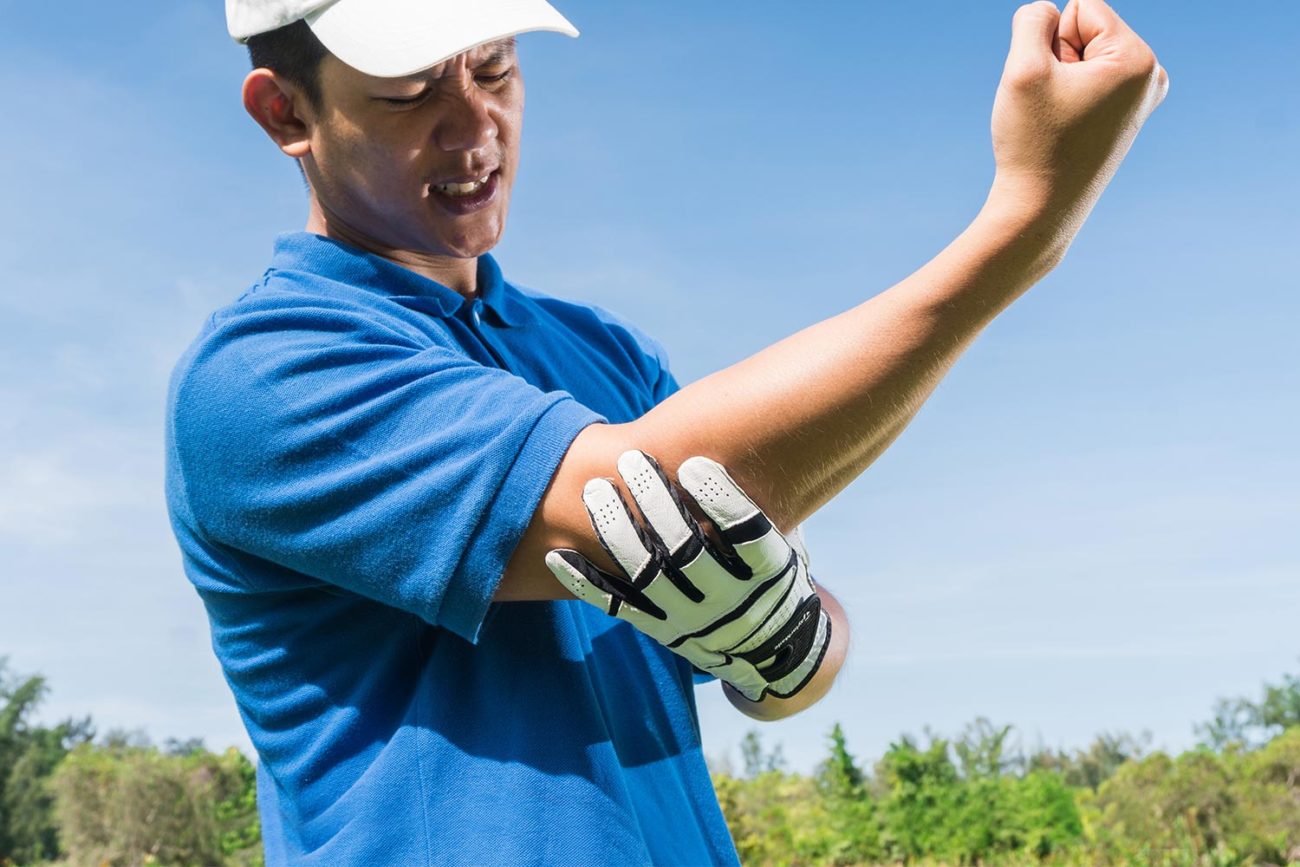Does a Golfer Elbow Brace Help for Golfers' Elbows

According to medical research and sports rehabilitation data, wearing braces can effectively reduce the tension on tendons and ligaments, thereby reducing the risk of pain and inflammation.
1. What is Golf Elbow?
Golf elbow (lateral epicondylitis) is a chronic sports injury mainly caused by overuse of the forearm flexor muscles (such as the flexor carpi radialis, flexor carpi ulnaris, etc.).

Pathological mechanisms include:
-
Microscopic tendon tears: Repetitive swinging movements can cause micro-tears in the inner elbow tendons, leading to an inflammatory response, pain, and weakness. According to the American College of Sports Medicine, if the tendon tear in the elbow exceeds 20%, it can cause significant pain and affect daily activities.
-
Insufficient tissue repair: Continuous load prevents tendons from fully recovering, leading to chronic inflammation, which gradually develops into golf elbow.
-
Functional limitations: The tension and elasticity of the affected tendon decrease, resulting in weakened forearm strength, especially in gripping and extension movements, where symptoms are most pronounced.
Typical Symptoms:
-
Persistent pain on the inner side of the elbow joint, especially aggravated during forceful gripping or swinging.
-
Weakness in the forearm muscles, decreased grip strength, and inability to lift even light objects.
-
Significant tenderness around the elbow, accompanied by a sense of stiffness.
2. Working Principle of Elbow Braces
The principle of ’s golf elbow brace lies in the application of external pressure and biomechanical adjustment.
Wearing a golfers elbow band mainly provides relief through the following mechanisms:
-
By applying external pressure, the brace effectively relieves tension in the forearm extensor muscles, reducing friction between tendons and bones. According to a study in the Journal of Sports Medicine, wearing a brace can reduce tension in the forearm extensor muscles by an average of 25%.
-
The brace provides external support for stability, limiting excessive movement of the elbow joint. After wearing the brace, the range of motion of the elbow joint is reduced by an average of 15 degrees, effectively preventing further injury.
-
The compression effect of the brace can promote local blood circulation, helping the inflamed area to metabolize harmful substances more quickly. According to clinical trial data, 80% of patients who continuously wore braces for 3 months showed a significant decrease in elbow soft tissue inflammation markers (e.g., C-reactive protein).
3. Recommendations for Using Elbow Braces
The selection and use of should be precisely adjusted according to individual symptoms and rehabilitation needs. The following are specific recommendations:
(1) Choose the appropriate type of brace: Select the suitable type of brace based on different symptoms. For mild cases, choose a pressure strap; for those in the rehabilitation phase, choose an elastic brace; and for severe cases, choose a brace with metal supports.
(2) Position and tightness: The brace should be worn on the muscle bulge of the forearm, approximately 5-7 cm away from the elbow joint. If worn too tightly, it may hinder blood circulation, while if too loose, it cannot provide adequate support. According to the Sports Medicine Manual, it is recommended that when wearing the brace, a finger should be able to be inserted easily for optimal fit.
(3) Wearing time and frequency: Daily wearing time should be controlled within 4-6 hours, and it can be extended appropriately during exercise or when pain is obvious, but it should not exceed 8 hours. Long-term wearing may cause muscle dependence and limited joint movement. It is recommended to combine it with physical therapy, muscle relaxation exercises, and other auxiliary rehabilitation measures.
(4) Daily maintenance and replacement of the brace: Regularly clean and maintain the brace to ensure its support performance and hygiene. It is generally recommended to replace the brace every 6 months, especially if the brace shows signs of looseness, decreased elasticity, or obvious wear and tear.
(5) Combine with other rehabilitation methods: can only provide auxiliary support and should be combined with physical therapy, functional training, and other methods for comprehensive rehabilitation.
















